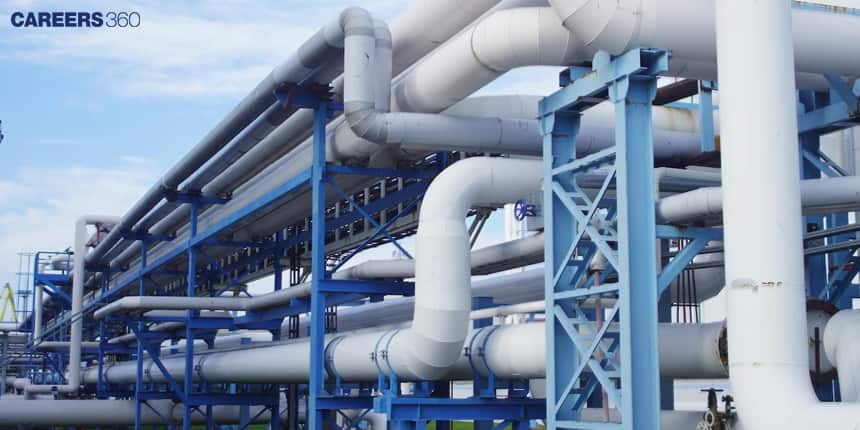Reverse Osmosis: Definition, Process, Uses, Working of Reverse Osmosis
Reverse osmosis is a process in which water is purified by forcing it through a semi-permeable membrane, removing impurities, solutes, and contaminants. Unlike regular osmosis, it works against the natural concentration gradient, requiring external pressure. In this article, reverse osmosis, the principle of reverse osmosis, the process of reverse osmosis, the reverse osmosis experiment, the advantages of reverse osmosis, and the disadvantages of reverse osmosis are discussed. Reverse Osmosis is a topic of the chapter Transport in Plants in Biology.
NEET 2025: Mock Test Series | Syllabus | High Scoring Topics | PYQs
NEET Important PYQ's Subject wise: Physics | Chemistry | Biology
New: Meet Careers360 B.Tech/NEET Experts in your City | Book your Seat now
- What is Reverse Osmosis?
- Principle of Reverse Osmosis
- Process of Reverse Osmosis
- Reverse Osmosis Experiment
- Advantages of Reverse Osmosis
- Disadvantages of Reverse Osmosis

What is Reverse Osmosis?
Reverse osmosis (RO) is somewhat of an up-to-date separation technique majorly applied to water purification. RO primarily involves forcing water through a semipermeable membrane to remove dissolved solutes. It is particularly very effective in seawater desalination and drinking water purification. This process became more effective with the development of membrane technology and the science of polymers, thus turning it into one of the important tools for residential and industrial applications. The working principle or the mechanism, advantages, and some limitations of reverse osmosis are overviewed here to understand this important technology in some detail.
Principle of Reverse Osmosis
The reverse osmosis process relies on a semipermeable membrane, where significantly only the solvent molecules are easily allowed to pass through while blocking larger solute molecules. During the process, the pressure applied to the solution side of the membrane ensures that the solvent molecules move through to the side with a lower concentration of the solutes. This finally leads to the separation of solutes from the solvent, hence purification.
Also Read-
Process of Reverse Osmosis
The process of reverse osmosis has the following distinct steps associated with it:
Pressure Application: Pressure applied on the solution side is increased to a value above the osmotic pressure, which is the minimum pressure required to halt the flow of the solvent across the membrane.
Solvent Movement: Due to this elevated pressure, the solvent molecules move through the semipermeable membrane to the lower concentration side of the solute particles.
Separation and Purification: What happens is that the solute particles get separated from the solvent, which becomes purified.
This process works effectively when pressure is applied that is greater than the osmotic pressure and on flow in the proper direction of the solvent.
Reverse Osmosis Experiment
An illustrative experiment would do well to explain reverse osmosis:
Assembly: Take two containers, with a semipermeable membrane in between, one containing fresh water, and another containing a solution of high concentration.
Application of Pressure: Apply pressure to the concentrated solution side.
Result: Due to this, water molecules diffuse through the membrane into the freshwater side, thereby explaining the concept of reverse osmosis.
This simple experiment is a good example of how reverse osmosis works in a closed environment.
.jpg)
Advantages of Reverse Osmosis
Some of the advantages associated with reverse osmosis are enumerated below:
Thorough decontamination: Efficiently removes different dissolved and suspended particles, including salts, chemicals, and microorganisms.
Wide applications: The technology ranges from desalination of seawater and industrial liquid wastes to drinking water purification.
Health benefits: This technology provides clean water and hence saves customers from waterborne diseases.
These advantages combine to make reverse osmosis an extremely useful technology both in the home and industrially.
Disadvantages of Reverse Osmosis
Despite all of the advantages, there are some reverse osmosis limitations:
Membrane Sensitivity: The various types of membranes used have varying tolerances to pH and temperature. For example, cellulose acetate membranes can not withstand high temperatures above 35°C, while polyamide membranes do not have good resistance to chlorine.
Maintenance Requirements: Membranes need periodic replacement. Sterilization of the system has to be done regularly to ensure efficiency.
Wastewater: In this process, a lot of wastewater is generated. This can create certain misgivings about the use of reverse osmosis in places where there are limited sources of water.
Also Read-
Recommended Video on Reverse Osmosis
Frequently Asked Questions (FAQs)
Reverse osmosis is targeted at purifying water from dissolved salts, chemicals, and other impurities in the water.
Contrary to regular osmosis—spontaneous movement of solvents from areas of low to high concentration—reverse osmosis means forcing solvent molecules through the membrane against the concentration gradient by applying pressure.
Applied membranes are usually made of cellulose acetate, polyamide, and thin-film composites; each type has some features and applications.
The maintenance includes periodic replacement of membranes, regular sterilisation of a system, and monitoring for any possible problems.
The amount of waste varies, but commonly, reverse osmosis systems can waste up to 3–4 times the amount of purified water produced.
Also Read
03 Dec'24 10:55 AM
02 Dec'24 08:49 PM
02 Dec'24 05:10 PM
02 Dec'24 04:10 PM
02 Dec'24 02:50 PM
02 Dec'24 01:39 PM
02 Dec'24 11:56 AM
02 Dec'24 11:44 AM
30 Nov'24 07:29 PM